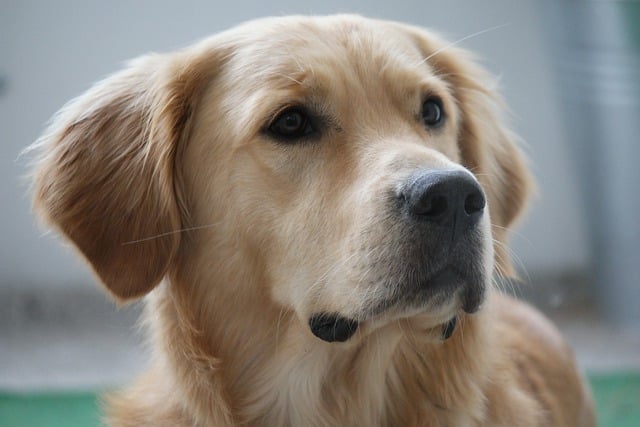
How do i train my dog to be obedient?
Watching your dog dart across the park ignoring your calls isn’t just frustrating—it can put them at risk near busy streets or public spaces.
What's the hardest breed of dog to potty train? Any seasoned dog owner will tell you it’s not a one-size-fits-all answer, but certain breeds consistently test even the most patient trainers. Take the Dachshund, for example—those long, low-slung bodies come with a stubborn streak that can turn potty training into a months-long battle. A 2023 survey by the UK’s Kennel Club found that 68% of Dachshund owners reported needing more than six months to achieve reliable outdoor elimination, compared to 32% for Labrador Retrievers. Their independent nature, rooted in their history as badger hunters who worked solo, means they’re less likely to prioritize your schedule over their own.
Then there’s the Basset Hound, with those soulful eyes that seem to beg for forgiveness when they have an accident. But don’t let the droopy face fool you—their strong sense of smell often overrides their focus on potty training routines. Veterinarians specializing in animal behavior note that Bassets can get distracted mid-training session by a scent trail from three houses away, making consistent reinforcement tricky. In some U.S. states like California, where local ordinances require dogs to be leashed in public spaces, this distraction can complicate outdoor training sessions, as you’ll need extra vigilance to keep them on task instead of following their nose into a neighbor’s yard.
Small breeds like the Chihuahua also rank high on the challenge list, though not for lack of intelligence. Their tiny bladders mean they physically can’t hold it as long as larger dogs, and their tendency to bond closely with one person can lead to separation anxiety-related accidents. A study published in the Journal of Veterinary Behavior found that toy breeds under 10 pounds are 2.3 times more likely to have indoor accidents during their first year than medium-sized breeds. In apartment-heavy cities like New York, where many owners rely on pee pads as a temporary solution, this can create confusion—some Chihuahuas struggle to distinguish between acceptable indoor spots and forbidden areas, especially if routines are disrupted.
 It’s crucial to remember that breed tendencies aren’t destiny. Successful potty training relies on consistency, positive reinforcement, and understanding your dog’s unique needs—factors that apply regardless of whether you’re raising a Shiba Inu or a Golden Retriever. Also, familiarize yourself with local laws: in many European countries, including Germany and France, failing to clean up after your dog can result in fines upwards of €100, while some U.S. cities require dogs over a certain age to be housebroken if kept in multi-dwelling buildings. These regulations underscore the importance of investing time in proper training from day one.
It’s crucial to remember that breed tendencies aren’t destiny. Successful potty training relies on consistency, positive reinforcement, and understanding your dog’s unique needs—factors that apply regardless of whether you’re raising a Shiba Inu or a Golden Retriever. Also, familiarize yourself with local laws: in many European countries, including Germany and France, failing to clean up after your dog can result in fines upwards of €100, while some U.S. cities require dogs over a certain age to be housebroken if kept in multi-dwelling buildings. These regulations underscore the importance of investing time in proper training from day one.
The Afghan Hound presents another interesting case. Bred for centuries to hunt in harsh mountain terrain, they’ve developed a strong independent streak that can make them seem indifferent to training cues. One London-based trainer I spoke with recalled working with an Afghan named Zara, whose owner spent over a year perfecting her potty routine. “She’d do great for weeks, then suddenly decide the living room rug was fair game—no rhyme or reason,” he laughed. “You learn to roll with the unpredictability with these breeds.”
Environmental factors play a role too. In regions with extreme weather, like the Nordic countries, winter temperatures can drop below -20°C, making outdoor training sessions challenging. This is where adapting your approach becomes key—investing in weatherproof gear for your dog and adjusting training times to avoid the coldest hours can make a significant difference, even with more difficult breeds.
Ultimately, the “hardest” breed to potty train is the one that doesn’t mesh with your lifestyle or training approach. A high-energy breed like the Dalmatian might struggle in a small apartment with limited outdoor access, while a laid-back Bulldog could thrive in the same environment. By researching breed characteristics before bringing a dog home, understanding local regulations, and committing to a patient, positive training plan, you’ll set both yourself and your furry companion up for success. And remember—every accident is a learning opportunity, not a failure.

Watching your dog dart across the park ignoring your calls isn’t just frustrating—it can put them at risk near busy streets or public spaces.

New puppy owners often find themselves rushing to clean up accidents before they set in, and that’s where puppy pad training becomes a game-changer.

If you've noticed your dog's waistline disappearing and your veterinarian has mentioned those few extra pounds, your first instinct might be to simply reduce the amount of food in their bowl.

Training a dog to use a designated spot indoors isn’t as daunting as many new owners fear, but it does take consistency and an understanding of your pet’s needs.

That moment of dread on a walk is all too familiar for many new dog owners. You see another dog approaching down the sidewalk of your neighborhood

If the sight of another dog on your neighborhood walk makes your heart sink as your own dog erupts into a frenzy of barking and lunging, you're not alone.